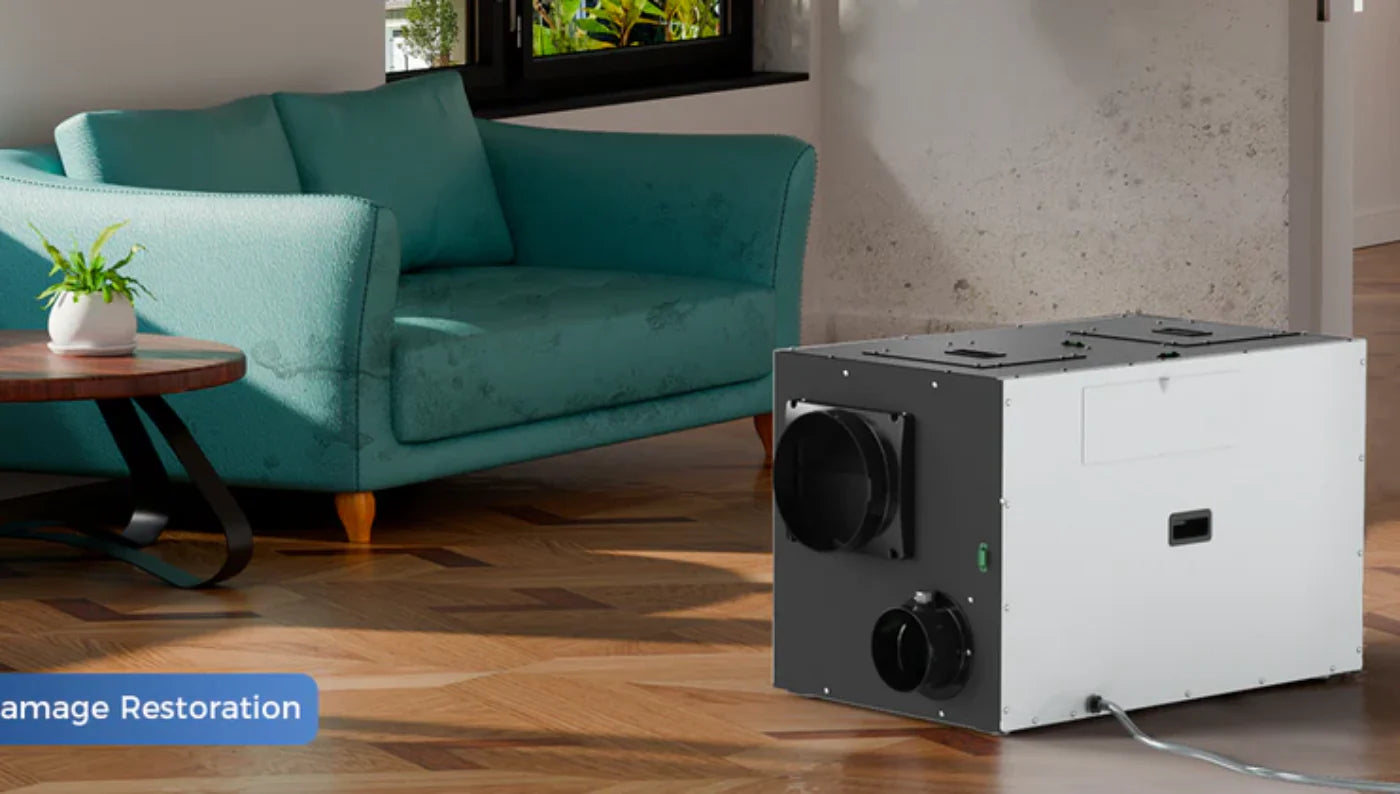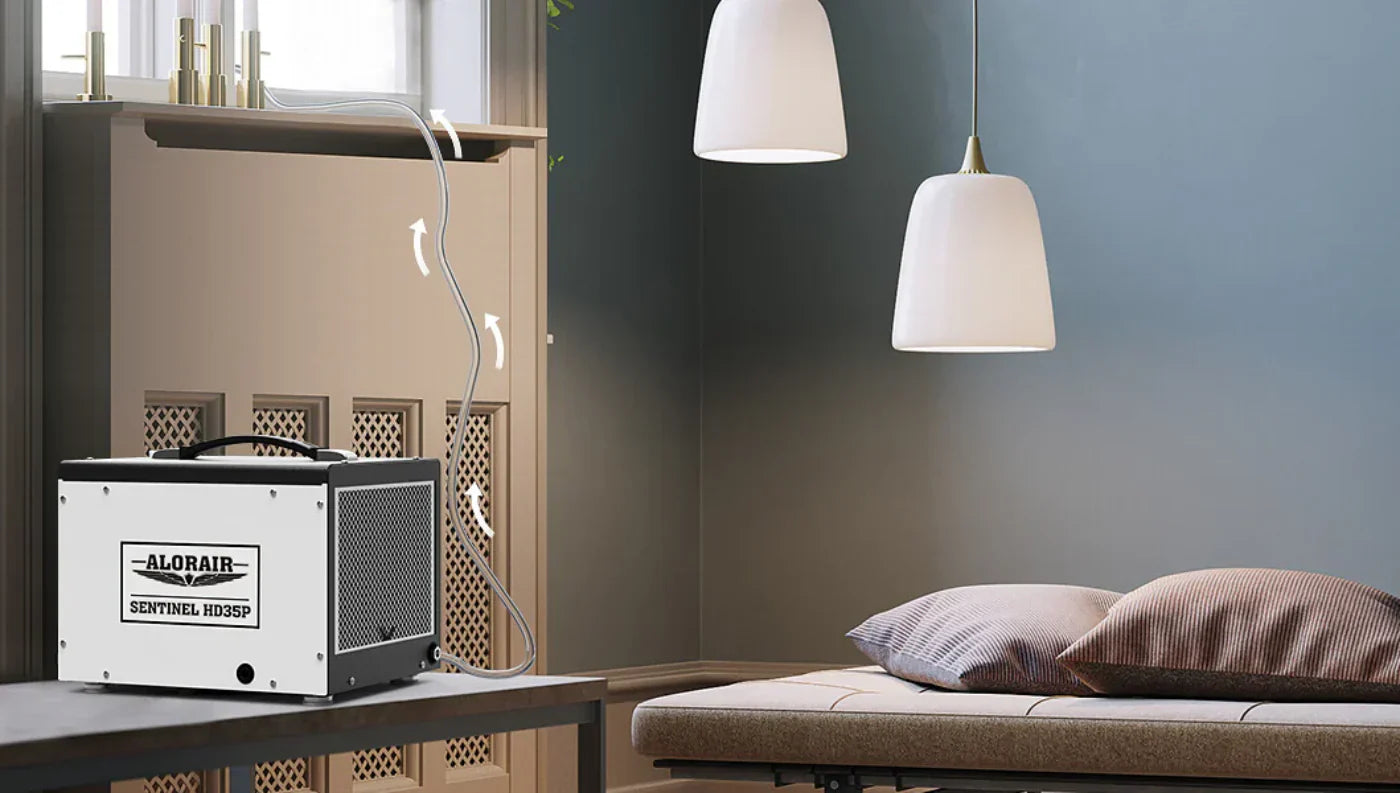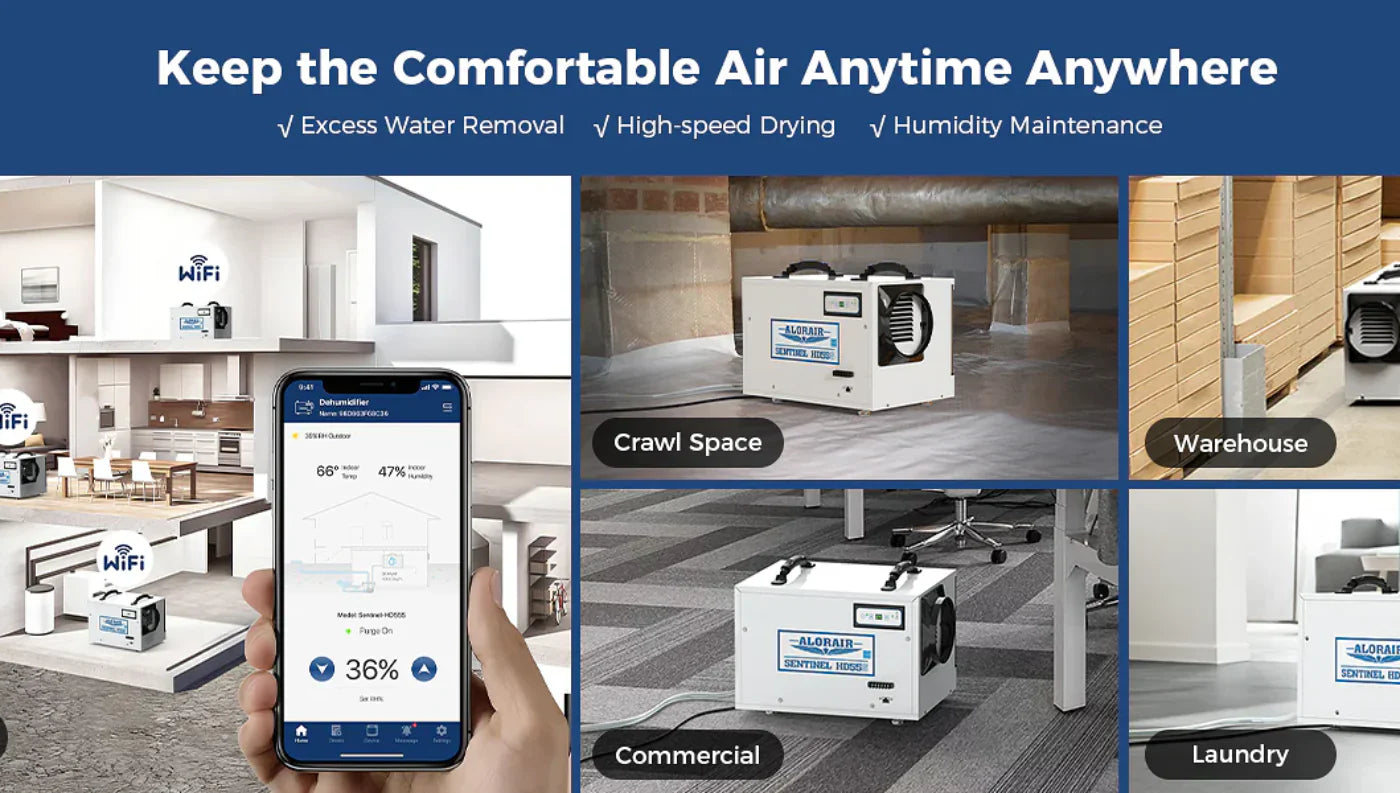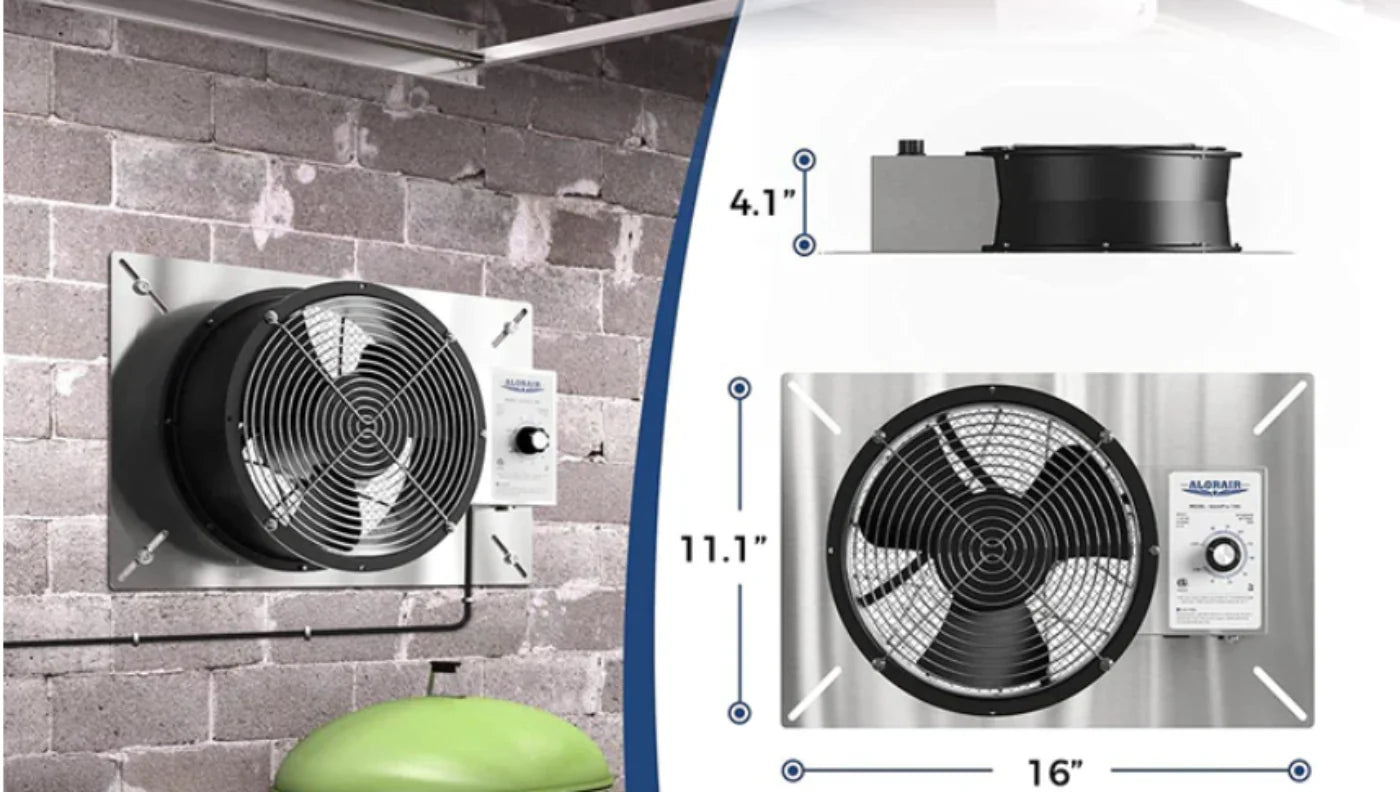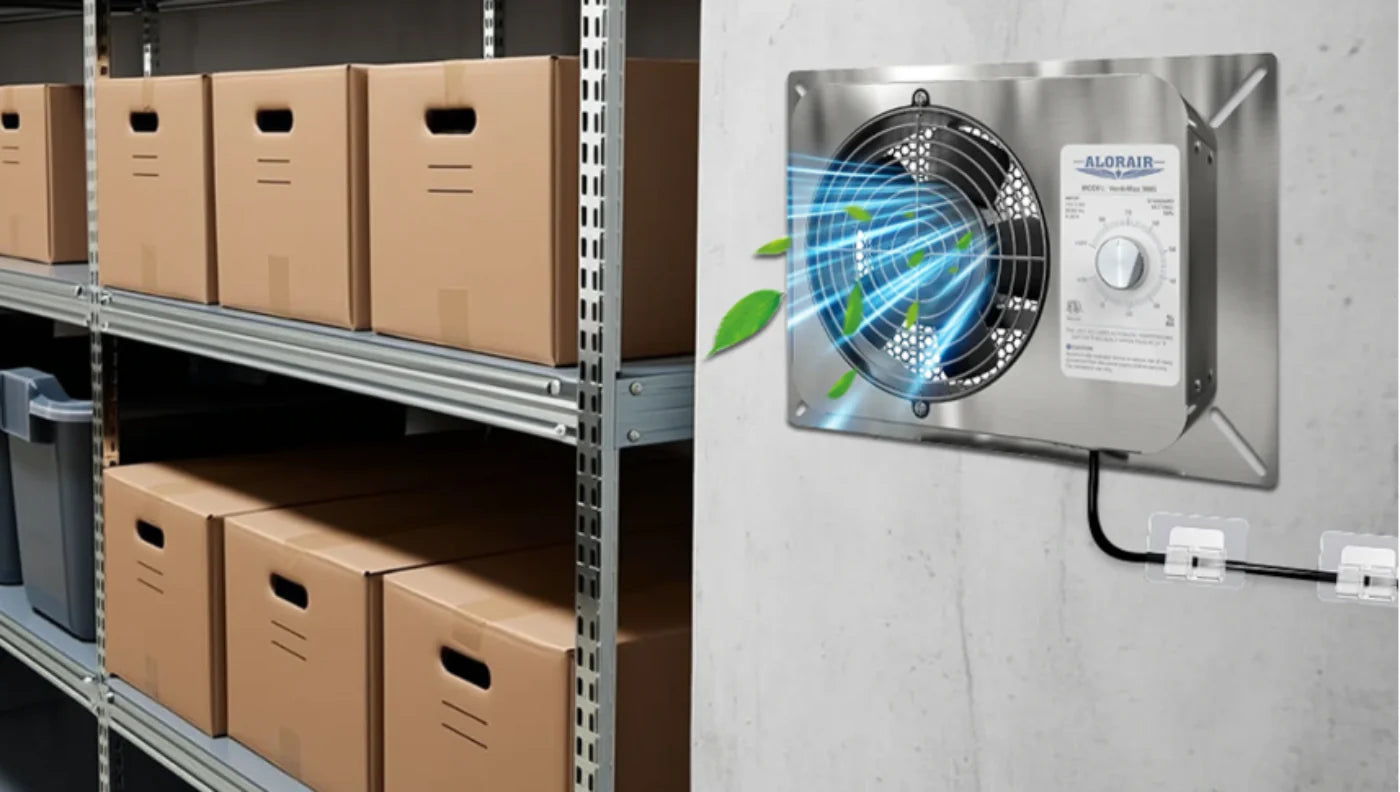The scorching heat of summer forces you to stay at home. But if your home is not a refugee from moisture issues and crushing heat, where will you go? So, when the heat of summer arrives, managing indoor air comfort becomes a priority for many homeowners. Among the various devices available, dehumidifiers often come up in conversations about indoor air quality and comfort.
But a common question persists: Do dehumidifiers cool the air? While dehumidifiers play a significant role in reducing moisture, their effect on temperature is more nuanced than many might think. In this blog, we’ll explore how dehumidifiers work, do dehumidifiers cool or heat a room, and what you can expect when using one in your home.
What is a Dehumidifier and How Does It Work?
A dehumidifier is a device designed to reduce and maintain the level of humidity in the air. This process is essential for maintaining a comfortable and healthy indoor environment, especially in areas prone to high humidity. But to understand the answer to “do dehumidifiers cool the air?”, it's crucial first to grasp how these devices function.
How Dehumidifiers Work
Dehumidifiers operate by drawing in humid air from the room. Inside the unit, the air is passed over cold coils, causing the moisture in the air to condense into water droplets. This condensation is collected in a reservoir or drained away, while the now-drier air is reheated slightly and released back into the room. This process effectively reduces the overall humidity in the space, making the air feel more comfortable.
Different Types of Dehumidifiers
There are several types of dehumidifiers, each suited to different environments and needs. The most common are refrigerant and desiccant dehumidifiers:
Refrigerant Dehumidifiers: These are the most common type and work by cooling the air to condense moisture. They are highly effective in warm, humid conditions but less so in cooler environments.
Desiccant Dehumidifiers: These use a desiccant material to absorb moisture from the air. They are more effective in cooler conditions and are often used in places where temperatures are lower.
Some homeowners might also opt for a whole house dehumidifier, which is integrated into the HVAC system to manage humidity levels throughout the entire home.
The Perception of Cooling
One of the most interesting aspects of dehumidifier use is the perception of cooling which many people report. While dehumidifiers are not designed to lower the temperature in a room, they can still make the environment feel cooler.
The Psychology of Dry Air
There is a psychological and physiological component to how we perceive temperature. High humidity makes the air feel warmer than it actually is because our sweat does not evaporate as efficiently in humid conditions, making us feel hotter. When a dehumidifier reduces the humidity, sweat can evaporate more easily, making the body feel cooler, even though the actual room temperature hasn’t changed. This is why many people believe that dehumidifier make room cooler.
"Many homeowners don't realize the impact that proper humidity control can have on their home's structure and comfort. A good dehumidifier can protect against moisture-related damage while also contributing to a cooler and more pleasant living environment”, said Sarah Thompson, Home Renovation Expert.
Comparison to Air Conditioners
It's essential to understand the difference between dehumidifiers and air conditioners. While air conditioners actively cool the air by removing heat, dehumidifiers focus solely on reducing humidity. Any cooling effect from a dehumidifier is incidental, resulting from removing moisture rather than extracting heat. So, while a dehumidifier can make a room feel more comfortable, it's not a replacement for an air conditioning unit when it comes to cooling.
Common Misconceptions
A common misconception is that because dehumidifiers release cold air during moisture condensation, they should naturally cool the room. However, the air that is released back into the room is slightly warmer due to the reheating process. The overall effect on room temperature is minimal, meaning a dehumidifier will not cool the room in the way an air conditioner would. At this point, the question that often pops up in mind is ‘will a dehumidifier cool a room.
Does a Dehumidifier Cool a Room?
The question, “does a dehumidifier cool a room?” often comes up among homeowners trying to manage indoor comfort. To clarify, a dehumidifier’s primary function is not to cool a room, but rather to reduce the humidity levels, making the environment feel less sticky and more comfortable. Here's a closer look at if dehumidifiers cool room, how this process works and what it means for your living space.
What is the Impact of Dehumidifier on Room Temperature?
When a dehumidifier operates, it pulls in humid air, removes the moisture, and then releases the drier air back into the room. Although the process involves cooling the air to condense the moisture, the air is slightly warmed as it passes through the unit before being released. This means that while the dehumidifier doesn’t significantly lower the air temperature, it doesn’t substantially raise it either. The overall impact on room temperature is minimal, often undetectable by most people.
Perceived Cooling Effect
Despite this, many users report that a room feels cooler after using a dehumidifier. This perceived cooling effect is due to the reduction in humidity. High humidity makes the air feel warmer because it hinders the body’s ability to cool itself through evaporation. When the humidity is lower, your sweat evaporates more easily, which cools your skin and makes you feel more comfortable, even if the actual temperature hasn’t dropped.
So, can a dehumidifier cool a room? Technically, no—dehumidifiers do not lower the air temperature. However, by creating a drier environment, they can make the room feel cooler, which might be exactly what you need for increased comfort.
Benefits of Dehumidifiers Beyond Cooling
While the primary question, “do dehumidifiers cool the air?” focuses on temperature control, it's important to highlight the other significant benefits dehumidifiers offer beyond just making a room feel cooler. Here are some key advantages of using a dehumidifier in your home:
Improved Comfort
By reducing humidity levels, dehumidifiers make your living space feel more comfortable. When the air is less humid, it feels fresher and lighter, which can make a big difference in overall comfort. Even in warm weather, lower humidity can make the heat more bearable, allowing you to set your thermostat higher and still feel comfortable. This is where the concept of dehumidifier cooling comes into play—not by cooling the air directly, but by enhancing your comfort in a less humid environment.
Preventing Mold and Mildew
One of the most significant benefits of using a dehumidifier is its role in preventing mold and mildew. High humidity levels create an ideal environment for mold growth, which can damage your home and pose serious health risks. By keeping humidity in check, especially in areas like basements or crawl spaces, a dehumidifier helps protect your home from moisture-related issues. This is particularly crucial in places where air circulation is limited, making a whole house dehumidifier or a crawl space dehumidifier an essential tool for long-term moisture control.
“Most people like the humidity level at around 30%,” says Brad Roberson, president of Aire Serv, a Neighborly company that centers on cooling, heating, and air quality. So, if you find humidity level much higher than this limit invest in a dehumidifier.
Energy Efficiency
Dehumidifiers can also contribute to energy efficiency. When the air is less humid, your air conditioner doesn’t have to work as hard to cool your home. This can lead to lower energy bills as you can set your thermostat higher without sacrificing comfort.
In fact, using a dehumidifier alongside your air conditioner can reduce overall energy consumption.
The dehumidifier cooling effect allows your cooling system to operate more efficiently, as dry air is easier to cool than humid air.
In short, while dehumidifiers may not directly cool the air, they offer numerous benefits that enhance comfort, protect your home from moisture damage, and improve energy efficiency.
Choosing the Right Dehumidifier for Your Space
When selecting the best dehumidifier for your space, it’s essential to consider factors such as room size, humidity levels, and specific needs like crawl spaces or basements. Here's how you can make an informed decision:
Room Size and Dehumidifier Capacity
The size of the room or area where you plan to use the dehumidifier is crucial in determining the appropriate capacity. Dehumidifiers are rated by the amount of moisture they can remove from the air in a day, typically measured in pints. For small rooms or areas with moderate humidity, a smaller unit may suffice. However, for larger spaces like basements or areas with high humidity, you’ll need a more powerful dehumidifier.
Pro Tip: If you’re dealing with a large area or persistent high humidity, consider a whole house dehumidifier or a crawl space dehumidifier. These units are designed to handle larger volumes of air and provide more consistent humidity control across multiple rooms or the entire home.
Humidity Levels and Specific Needs
Consider the existing humidity levels in your space. If you live in a particularly humid climate or have areas prone to dampness, such as a basement or crawl space, you’ll need a dehumidifier that can effectively manage these conditions. Additionally, if your goal is to protect your home from moisture-related issues like mold and mildew, investing in a high-capacity, energy-efficient unit is essential.
Recommended Products:
For those looking for reliable, high-performance dehumidifiers, AlorAir offers a range of solutions designed specifically for challenging environments like basements and crawl spaces.
The AlorAir® Sentinel HDi90: for example, is a robust dehumidifier ideal for controlling humidity in larger spaces. Its energy-efficient design and powerful moisture removal capabilities make it an excellent choice for homeowners looking to maintain a dry, comfortable environment.
AlorAir® Sentinel HD55 Dehumidifier:Another standout product in AlorAir’s lineup is the Sentinel HD55 Dehumidifier. This compact yet powerful unit is designed to deliver exceptional performance in crawl spaces and basements, ensuring that even the most moisture-prone areas of your home remain dry and mold-free. It’s unique features like automatic deforesting, portable and versatile design, and digital control panel set it apart from others.
Pro Tip: When selecting a dehumidifier, also consider additional features such as auto-restart, continuous drainage options, and built-in hygrometers for precise humidity control. These features can enhance the overall efficiency and convenience of your dehumidifier.
How to Use the Dehumidifier Efficiently
To maximize the effectiveness of your dehumidifier and ensure it runs efficiently, proper usage and maintenance are key. Here are some tips to help you get the most out of your unit:
Optimal Placement
Where you place your dehumidifier can significantly impact its performance. Position the dehumidifier in a central location within the room or space for optimal airflow. Ensure it’s placed away from walls and furniture to allow for proper air circulation. For crawl spaces or basements, situate the unit in the dampest area to target moisture at its source.
Regular Maintenance
Maintaining your dehumidifier is crucial for long-term efficiency and performance. Regularly clean the filters and check for any blockages in the drainage system. Over time, dust and debris can accumulate, reducing the unit’s effectiveness and potentially leading to mechanical issues.
Pro Tip: Set a reminder to clean the dehumidifier’s filters every few weeks, or more frequently if you’re using it in a particularly dusty or damp environment. Keeping the unit clean ensures it operates at peak efficiency and prolongs its lifespan.
Combining with Other Cooling and Ventilation Methods
To enhance the comfort and effectiveness of your dehumidifier, consider using it alongside fans, air conditioners, or natural ventilation. While a dehumidifier alone can reduce humidity levels, combining it with other cooling methods can create a more comfortable living environment. For instance, running a fan can help distribute the dry air more evenly throughout the room, while air conditioning can lower the temperature, complementing the dehumidifier’s efforts to maintain a comfortable space.
Pro Tip: If you’re using a dehumidifier in a basement or crawl space, consider pairing it with a vapor barrier to further reduce moisture levels and enhance the overall air quality.
Conclusion
In understanding the question, "Do dehumidifiers cool the air?"—it's clear that while dehumidifiers do not directly lower the temperature of a room, they play a crucial role in enhancing comfort by reducing humidity levels. This reduction in humidity can make a room feel cooler and more pleasant, especially in hot, sticky conditions.
Dehumidifiers, particularly in humid areas like basements or crawl spaces, are essential for preventing mold, mildew, and other moisture-related problems. By maintaining optimal humidity levels, a dehumidifier can protect your home’s structure, improve air quality, and contribute to a healthier living space.
Ready to enhance your home’s comfort and air quality?
Visit AlorAir Crawlspace to browse our selection and find the perfect dehumidifier for your needs. Explore AlorAir’s range of top-performing dehumidifiers designed to tackle high humidity levels and improve your living space.
Whether you need a powerful unit for your crawl space or a whole house dehumidifier, AlorAir has the perfect solution for you. Don’t wait—invest in a reliable dehumidifier today and take the first step toward a healthier, more comfortable home. Have questions? Reach out to our team for expert advice and personalized recommendations.




